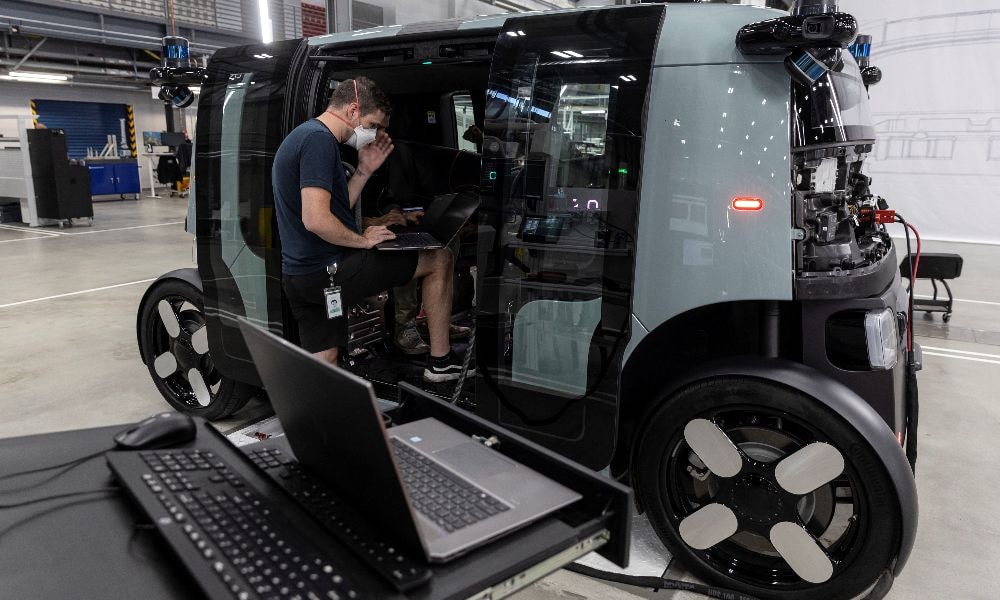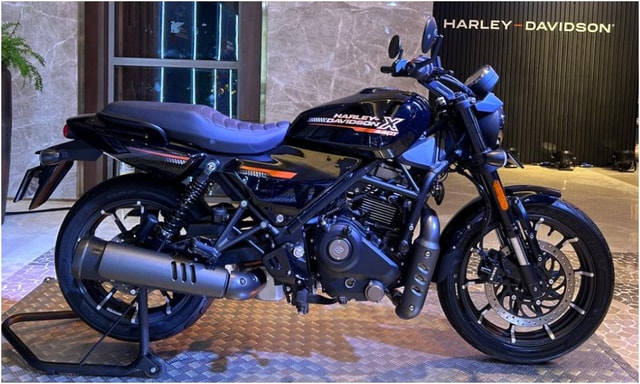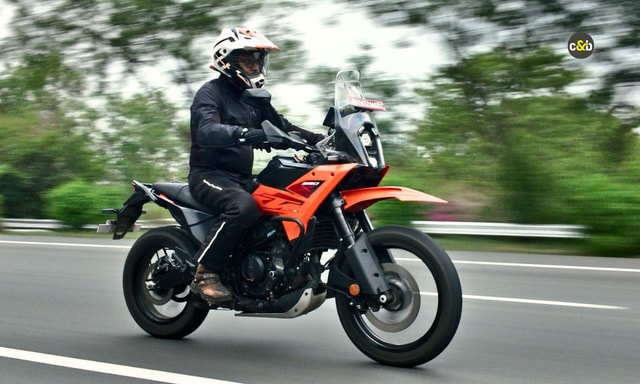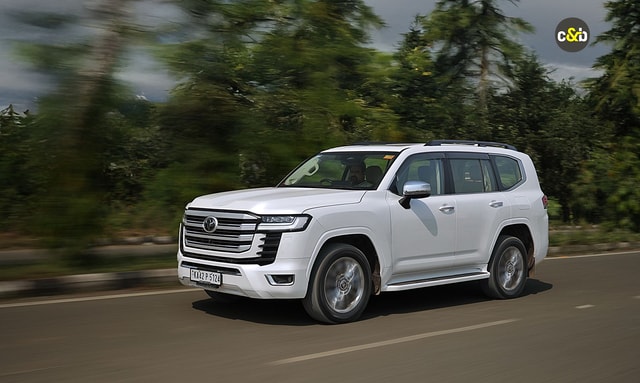Analysis: Retailers Turn To Robots In Cost Inflation Fight

At a vast warehouse in the southern Dutch city of Roosendaal, automated cranes and driverless vehicles silently stack clothes for the French and Italian stores of retailer Primark, reducing the need for hard-to-come-by labour. With goods packed more densely up to its roof, the new warehouse, which spans the size of over 15 football fields, reduces the need for extra sites - and workers - leading in time to a lower cost base. While retail has been slower to adopt automation than sectors such as autos and electronics, it has been picking-up the pace - from the introduction of basic self check-out tills in stores to the use of robots and AI in supply chains.
Now tight labour markets, rising wages and consumer spending pressure are forcing the industry to go further.
Global installations of industrial robots grew 31% in 2021 year-on-year, while sales of service robots rose 37%, with the retail sector a significant driver of both, according to the International Federation of Robotics.

Mark Shirley, head of logistics at Irish-founded Primark, said the 25 million euros ($26 million) investment in the Roosendaal site's automation would deliver an 8 million euros per year benefit from year four, in addition to savings from not having to lease another warehouse.
He estimates the use of automated cranes rather than manual fork lift trucks has increased the site's efficiency by 80%.
And crucially, the use of autonomous vehicles means the company no longer has to compete in the extremely tight Dutch labour market, a challenge felt in many advanced economies.
"When you take the industry as a whole, people are moving that way to mitigate their labour risks," Shirley told Reuters.
He estimates the retail industry is 40% automated, but sees that jumping to 60-65% over the next three to four years.
The march of the robots can be seen in fashion stores and food shops globally as an industry that employs millions grapples with the cost of rising wages, energy and raw goods.
On top of that, customers are reining in spending, with Amazon, the world's biggest online retailer, warning that shopping budgets were tight, particularly in Europe.
Across the region different retailers are taking different approaches. Carrefour, Europe's largest food retailer, has vowed to cut costs and simplify its ranges while Tesco, Britain's biggest, has accepted a hit to its profits.
In clothing, Zara-owner Inditex has been hiking prices to counter soaring costs while Primark-owner AB Foods said the low-cost fashion retailer would limit price increases, despite inflation hitting double-digits in many of its markets, because customers could not afford to pay any more.
That makes automation even more important.
While processes at online retailers are largely automated, vast parts of a traditional retailer's operations are still carried out manually, according to consultants at McKinsey.
"We're at a stage where technology is getting better and cheaper and the case for automation in some of those areas just becomes much more compelling," said Anita Balchandani, who leads their consumer practice in Britain.
Looking at the fashion industry, McKinsey expects fashion companies to double investment in technology from 1.6% to 1.8% of their revenue in 2021 to between 3.0% and 3.5% by 2030.
It says those fashion brands which fully integrate digital processes could cut by half the time it takes to get a product to market. That in turn could lead to an 8% rise in the sales of full-price goods, and a 20% drop in manufacturing costs.
Those same forces are driving automation in the food retail sector, with companies investing in cleaning robots, electronic shelf edge labels, and in technology that helps them understand real time stock levels and manage replenishment.
THE FUTURE
British online grocery pioneer Ocado is riding the wave, selling its automated warehouses and lightweight robots to retailers in the United States, Europe and Asia, hoping to eventually automate the entire process from farm and factory gate to a shopper's fridge.
At the Walmart owned Sam's Club chain in the United States almost 600 robots developed by Brain Corp both clean store floors and scan shelves to check stock levels and prices.
"Retailers are saying 'robots are the future,'" Michel Spruijt, Brain Corp's chief revenue officer, told Reuters, adding that the shift could "free up workers from tedious" tasks. His company also provides robotics for Schnucks, Kroger, Carrefour and Albert Hypermarkets.
The renewed focus on automation provides opportunities for logistics groups, robotics firms and the likes of Amazon.
While it has grabbed headlines with stores using cameras to remove the need for a checkout till, its Amazon Web Services unit also worked with groups including Adidas and Zalando to quickly scale-up popular products and drive sales.
Some trade unions have, however, pushed back on automation. Shopworkers' union USDAW in the UK said employers were all too often wasting money on technology that does not work properly and were not providing the necessary training.
And some caution that given fast changing markets large scale automation won't work for everyone.
Dan Myers, UK and Ireland managing director of freight firm XPO Logistics, said retailers investing tens of millions of pounds for a payback of up to a decade needed to be certain their business model would not change in the meantime.
"There is always a trade off between the agility and flexibility of a human approach versus the efficiency of an automated approach," he said.
Trending News
Latest News
 car&bike Team | Dec 7, 2025Harley-Davidson CVO Road Glide, Street Glide Launched In India; Cost More Than A Toyota FortunerLatest additions to Harley-Davidson's India portfolio are two full imports, headlining the brand's model range, packing the company's Milwaukee Eight VVT 121 V-twin engine.1 min read
car&bike Team | Dec 7, 2025Harley-Davidson CVO Road Glide, Street Glide Launched In India; Cost More Than A Toyota FortunerLatest additions to Harley-Davidson's India portfolio are two full imports, headlining the brand's model range, packing the company's Milwaukee Eight VVT 121 V-twin engine.1 min read car&bike Team | Dec 6, 2025Harley-Davidson X440T Launched At Rs 2.80 Lakh: Here's What's NewJoining the existing (but now repositioned) X440 lineup is the X440T, featuring a new rear subframe, ride-by-wire and switchable ABS.1 min read
car&bike Team | Dec 6, 2025Harley-Davidson X440T Launched At Rs 2.80 Lakh: Here's What's NewJoining the existing (but now repositioned) X440 lineup is the X440T, featuring a new rear subframe, ride-by-wire and switchable ABS.1 min read car&bike Team | Dec 6, 2025Tata Sierra Variant-Wise Prices Revealed: Check Out How Much Pure And Adventure Trims CostIn a surprising move, Tata has decided to keep the prices of the range-topping variants of the new Sierra under wraps for a few more days.3 mins read
car&bike Team | Dec 6, 2025Tata Sierra Variant-Wise Prices Revealed: Check Out How Much Pure And Adventure Trims CostIn a surprising move, Tata has decided to keep the prices of the range-topping variants of the new Sierra under wraps for a few more days.3 mins read car&bike Team | Dec 6, 2025MotoSoul 2025: TVS Ronin Agonda Launched; Apache RTX 300 Gets 20th Anniversary EditionThe Ronin Agonda wears a white paint shade with stripe graphics, while the RTX 300 joins the 20th Anniversary lineup of Apache models.2 mins read
car&bike Team | Dec 6, 2025MotoSoul 2025: TVS Ronin Agonda Launched; Apache RTX 300 Gets 20th Anniversary EditionThe Ronin Agonda wears a white paint shade with stripe graphics, while the RTX 300 joins the 20th Anniversary lineup of Apache models.2 mins read car&bike Team | Dec 5, 2025Trump Eyes Production Of Smaller, More Fuel-Efficient Cars In USTrump broached the topic of opening the doors for production of smaller, more fuel-efficient cars – similar to those sold in Japan and South Korea - while announcing a backtrack of CAFE norms set under the Biden administration.2 mins read
car&bike Team | Dec 5, 2025Trump Eyes Production Of Smaller, More Fuel-Efficient Cars In USTrump broached the topic of opening the doors for production of smaller, more fuel-efficient cars – similar to those sold in Japan and South Korea - while announcing a backtrack of CAFE norms set under the Biden administration.2 mins read Preetam Bora | Dec 5, 2025KTM 390 Adventure, 390 Duke, 390 Enduro Recalled Over Engine Stall RiskThe recall for KTM 390 models has been announced to address an engine stall issue, and the engine control unit (ECU) will be updated free of charge in all affected motorcycles.2 mins read
Preetam Bora | Dec 5, 2025KTM 390 Adventure, 390 Duke, 390 Enduro Recalled Over Engine Stall RiskThe recall for KTM 390 models has been announced to address an engine stall issue, and the engine control unit (ECU) will be updated free of charge in all affected motorcycles.2 mins read
 Girish Karkera | Dec 4, 20252026 Honda Prelude First Drive: Domesticated Civic Type RA sporty-looking coupe built to give customers a taste of performance but not at the expense of everyday practicality.5 mins read
Girish Karkera | Dec 4, 20252026 Honda Prelude First Drive: Domesticated Civic Type RA sporty-looking coupe built to give customers a taste of performance but not at the expense of everyday practicality.5 mins read Seshan Vijayraghvan | Nov 29, 2025Mahindra XEV 9S First Drive Review: Big Electric SUV, Bigger ExpectationsThe XEV 9S lands at a time when the EV crowd is growing fast. It’s a big, born-electric, three-row SUV that starts under 20 lakh. It sits close to the XUV700 in size, but the brief is very different. Here’s what it’s like on the road.11 mins read
Seshan Vijayraghvan | Nov 29, 2025Mahindra XEV 9S First Drive Review: Big Electric SUV, Bigger ExpectationsThe XEV 9S lands at a time when the EV crowd is growing fast. It’s a big, born-electric, three-row SUV that starts under 20 lakh. It sits close to the XUV700 in size, but the brief is very different. Here’s what it’s like on the road.11 mins read Bilal Firfiray | Nov 26, 2025Tata Harrier EV vs Mahindra XEV 9e: Battle Of India’s Electric TitansWhen India made two electric SUVs battle it out, the winner is the buyer. They get a choice to take home what’s best suited for them – and read on to find out which one is better for YOU.1 min read
Bilal Firfiray | Nov 26, 2025Tata Harrier EV vs Mahindra XEV 9e: Battle Of India’s Electric TitansWhen India made two electric SUVs battle it out, the winner is the buyer. They get a choice to take home what’s best suited for them – and read on to find out which one is better for YOU.1 min read Janak Sorap | Nov 19, 2025Hero Xpulse 210 Vs Kawasaki KLX 230 Comparison Review: Dual-Sport DilemmaWith a price difference of just Rs 12,000, which of the two dual-sport motorcycles is meant for you?1 min read
Janak Sorap | Nov 19, 2025Hero Xpulse 210 Vs Kawasaki KLX 230 Comparison Review: Dual-Sport DilemmaWith a price difference of just Rs 12,000, which of the two dual-sport motorcycles is meant for you?1 min read Jaiveer Mehra | Nov 17, 20252025 Toyota Land Cruiser 300 Review: Beast From The EastThe Land Cruiser name may have a long and storied history, but does it fit the bill for an Rs 2 crore-plus SUV in India?13 mins read
Jaiveer Mehra | Nov 17, 20252025 Toyota Land Cruiser 300 Review: Beast From The EastThe Land Cruiser name may have a long and storied history, but does it fit the bill for an Rs 2 crore-plus SUV in India?13 mins read






























































































































